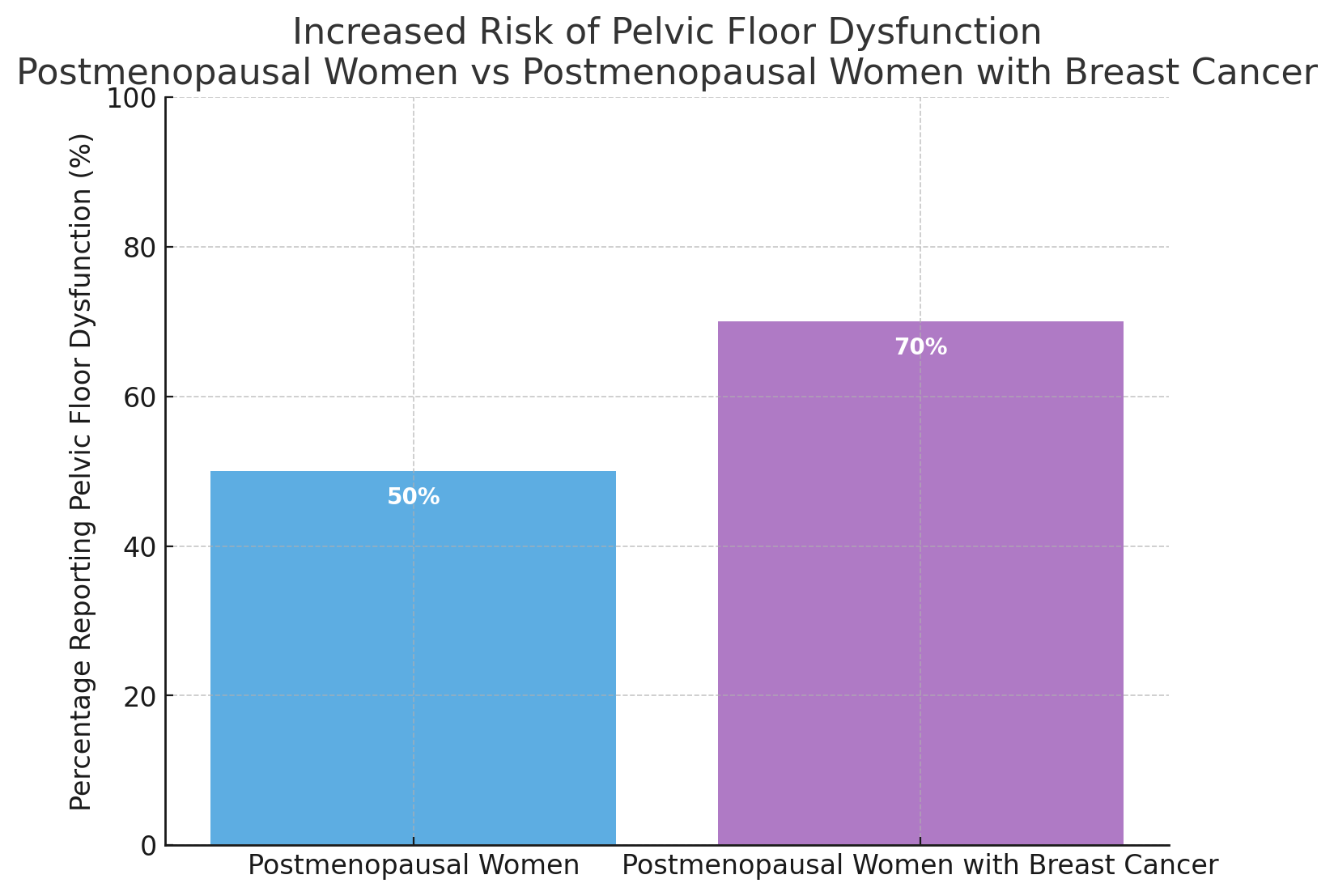
Let me start at the beginning. I could have picked any of the following titles to for this blog:
Pelvic floor dysfunction after breast cancer: What no one tells you!
Breast cancer and pelvic floor health: Why prevention is better than cure!
Pelvic floor exercises after breast cancer: Don’t wait for symptoms!
The overlooked link between breast cancer and pelvic floor dysfunction.
Research from 2022 – Experiences of pelvic floor dysfunction and treatment in women with breast cancer: a qualitative study – Concluded – The women taking part in the study reported that there needs to be more awareness about pelvic floor dysfunction in women undergoing treatment for breast cancer. They would like to receive information about pelvic floor dysfunction prior to starting treatment.
Research Feb 2025 – Genitourinary symptoms in women with breast cancer: frequency, severity and impact – Concluded – Although genitourinary are very common in women with breast cancer, the majority of women in the study did not recall being warned about or asked about these symptoms.
When you are focused on recovering from breast cancer, your pelvic floor probably isn’t the first thing on your mind. But did you know that treatment for breast cancer can directly affect your pelvic health? It is something that is rarely talked about, but it affects many women– and prevention is far easier (and kinder) than trying to fix a problem later.
“Working with women with pelvic floor dysfunction is not new for me, I have worked with this population for many years and have questions on my screening form directly related to this. What was highlighted from this was some women were telling me that that were experiencing symptoms following treatment, not immediately, but in the months after. I always talk about how muscles can weaken because of treatment.”
Why Does Breast Cancer Treatment Affect the Pelvic Floor?
Many breast cancer treatments– especially hormone therapies like Tamoxifen or Aromatase inhibitors– lead to changes in oestrogen levels. This drop does not just affect the breast tissue; it can lead to: Pelvic floor weakness, Vaginal dryness, Urinary Incontinence, Pain during Sex.
If you have also been through chemotherapy, surgery or radiation, you might have been fatigued and spent more time being less active, this on its own will lead to weakening of the core and pelvic muscles. Fatigue and the emotional time of cancer recovery make it easy to see how pelvic floor health takes a back seat– until you have a problem.
The Role of the Pelvic Floor
Your pelvic floor muscles are the unseen and unsung heroes of your core. They support the bladder, bowel, and uterus.

They support the bladder, bowel, and uterus; help maintain continence; and they play a role in sexual health. When these muscle weaken or become dysfunctional, it can impact daily life that are often frustrating, and sometimes embarrassing.
The good news: pelvic floor muscle training is simple, effective, and can make a big difference– especially if you start before symptoms appear.
Why Prevention Beats Fixing a Problem
Many women (and men) only start thinking about their pelvic floor when they notice symptoms like leaking, heaviness, or discomfort, and very often are too embarrassed to mention these problems until years later. But strengthening and maintaining pelvic floor health before these symptoms appear can prevent dysfunction from developing in the first place.
Think of pelvic floor muscle training as part of your whole-body recovery after breast cancer. Just as you rebuild your strength, mobility, and bone health, your pelvic floor deserves attention too.
The Benefits of Pelvic Floor Exercise After Breast Cancer
Improved bladder and bowel control
Reduced risk of pelvic organ prolapse
Increased comfort and confidence during sex
Better core strength which can help with posture and confidence
Improve quality of life
You can do pelvic floor exercises discretetly, almost anywhere. If you are unsure, then getting help from a pelvic health prctitioner can make all the difference in ensuring you are doing them effectively. Joining a cancer support group and chatting with others can often help you feel less alone and the volunteers will often know where to signpost you for help.
In my 6-week breast cancer recovery programme, we include pelvic floor awareness and activation as part of the core movement. It’s gentle, guided, and designed for women at every stage of recovery.
If you have been through breast cancer treatment, know that pelvic floor dysfuntion is common–but it’s not something you just have to accept. You desrve to move, live, and feel comfortable in your body again
